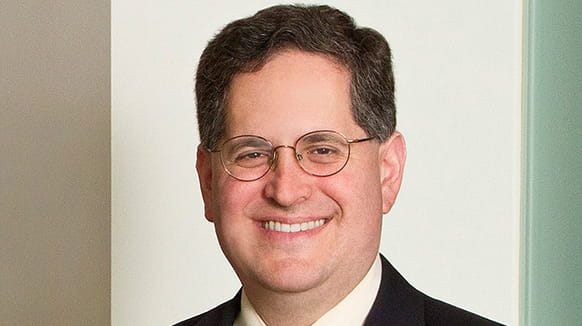In an effort to ease the transition to the new DOCX filing format for non-provisional utility patent applications, the United States Patent and Trademark Office (USPTO) recently announced it will allow the option to file an applicant-generated PDF along with the DOCX filing of the application through December 31, 2022.
This announcement came from Kathi Vidal, the new Director of the USPTO, in a blog post released on Wednesday, April 27, 2022 on the USPTO website1, and was formally published in the Federal Register on Thursday, April 28, 2022.2 The option to file an applicant-generated PDF follows a previous announcement from the USPTO that the implementation of a surcharge fee for non-DOCX filings would be delayed until January 1, 2023.3 The previous effective date for the surcharge fee had been set for January 1, 2022, however, numerous objections and concerns have been raised.4
On January 1, 2023, the surcharge fee will be due for any non-provisional utility application – other than a reissue application – that is filed in a non-DOCX format. Until then, and to encourage applicants to begin the transition to DOCX format filings, the USPTO is giving applicants the option to file a backup, applicant-generated PDF along with the DOCX filing. The applicant-generated PDF will serve as a safeguard against any discrepancies that may arise as a result of the conversion process of the DOCX file to a PDF file at the USPTO. If such a discrepancy does arise, the applicant will be able to rely on the applicant-generated PDF to make any necessary corrections supported by the PDF upon the filing of a petition under 37 C.F.R. § 1.182 and an amendment in compliance with 37 C.F.R. § 1.121. Importantly, “[t]he applicant-generated PDF that accompanies a DOCX filing will not become part of the permanent record unless a petition is filed requesting the USPTO to correct the record in view of the applicant-generated PDF.”5
During this temporary period, applicants will not have to pay any additional fees if they choose to submit the applicant-generated PDF backup. There is, however, a caveat. This option is only available when filing an application in Patent Center. The option will not be available for applications filed via EFS-Web.6 Should an applicant choose to submit an applicant-generated PDF with their filing, the new document description will be “Auxiliary PDF of application” and will have a corresponding document code of AUX.PDF. The applicant-generated PDF should be a single PDF file containing all the sections of the application being filed in the DOCX format.
This backup option is the USPTO’s latest effort to instill additional confidence in applicants regarding the reliability and accuracy of the new DOCX filing format. It comes largely in response to growing concerns about the security and potential for document corruption when a DOCX application is filed and converted to PDF format at the USPTO. Once a patent application has been filed in the DOCX format at the USPTO, a preliminary validation of the document is performed. The preliminary validation process includes removing metadata, making supposedly non-substantive changes, such as accepting tracked changes and removing comments, and creating a feedback document for review by the applicant or practitioner. According to the USPTO, the goal of this process is to reduce the incidence of unnecessary delays.
One of the growing concerns is that the USPTO’s system used to perform this verification process could apply auto-corrections and substantive changes to what it determines to be formatting errors, page numbering errors, typographical errors, etc. Another significant concern is that although many applications create and support DOCX files, such as Microsoft Word, Google Docs, Office Online, LibreOffice, and Pages for Mac, there is no standardized DOCX format. As a result, there is the potential for certain symbols, characters, and fonts to be misinterpreted and incorrectly imaged when converted to a PDF file at the USPTO. This could be especially problematic, for example, when a patent application includes chemical formulas, mathematical equations, or other unusual formatting or characters.
Fortunately, the USPTO seems to have acknowledged these potential issues associated with the filing of patent applications in the DOCX format. The applicant-generated PDF option, in conjunction with the delaying of the effective date of the surcharge fee until the end of the year, will enable the USPTO to perform additional monitoring and evaluation of its information technology systems while encouraging patent applicants to begin dipping a toe in the water of the DOCX filing format.
In the meantime, it would be prudent for patent applicants and practitioners who have made, or will be making, the transition to filing non-provisional utility patent applications in the DOCX format to do two things: (1) file such applications in Patent Center along with an applicant-generated PDF of the application; and (2) scrutinize the PDF file generated by the USPTO system, or execute a document comparison application with the USPTO-rendered PDF and the applicant-generated PDF, to ensure no substantive changes or document corruption has occurred.
1 Vidal, K., & Faile, A. (April 27, 2022). Director’s blog: The latest from USPTO leadership. United States Patent and Trademark Office.
2 Filing Patent Applications in DOCX Format, 87 FR 25226 (Apr. 28, 2022).
3 Setting and Adjusting Patent Fees During Fiscal Year 2020, 86 FR 66192 (Nov. 22, 2021).
4 Setting and Adjusting Patent Fees During Fiscal Year 2020, 85 FR 46932 (Aug. 3, 2020).
5 Filing Patent Applications in DOCX Format, 87 FR 25226 (Apr. 28, 2022).
6 The USPTO is currently phasing-out EFS-Web and the Patent Application Information Retrieval (PAIR) system in favor of Patent Center.

